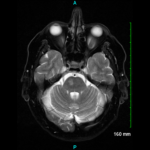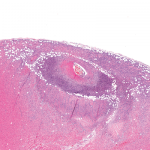The investigators calculated the altitude-adjusted corrected geomagnetic (AACGM) coordinates and identified the aurororal oval, in which auroral electrojets are commonly found. They then overlaid the spatial variation of RA risk and found that regions with a >2 odds ratio tended to be found at higher geographic latitudes on the West Coast than on the East Coast. The auroral oval also appeared to explain why the GCA incidences in Minnesota and northern Europe are higher than the GCA incidences in southern Europe and Israel. Thus, the analysis by Mr. Wing and colleagues offers insight into a possible mechanism behind the east-west distribution, which, up until this point, has remained unexplained. Moreover, the investigators suggest that such geomagnetic disturbances as substorms might further induce temporal variations in the electric and magnetic fields in the vicinity of the auroral oval, which might result in a weak, rapidly fluctuating magnetic field that might influence the immune system.
Although the study was not designed to determine a biological mechanism behind the relationship between geomagnetic activity and autoimmune disease, the authors suggest that geomagnetic disturbances might result in reduced production of the antiinflammatory agent melatonin. They conclude by calling for further investigation of the link between solar, geospace, atmospheric parameters and autoimmune disease.
Lara C. Pullen, PhD, is a medical writer based in the Chicago area.
References
- Wing S, Rider LG, Johnson JR, et al. Do solar cycles influence giant cell arteritis and rheumatoid arthritis incidence? BMJ Open. 15 May 2015. 5(5):e006636. doi: 10.1136/bmjopen-2014-006636.


